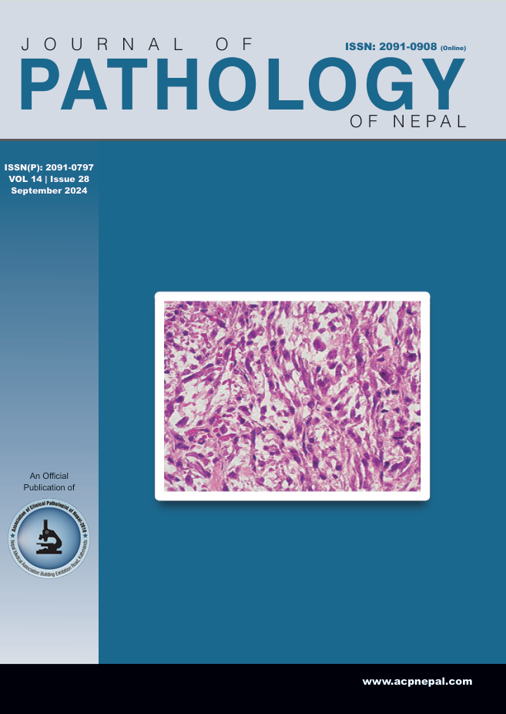Bladder biopsies: A histopathological study
DOI:
https://doi.org/10.3126/jpn.v14i2.71759Keywords:
Cystoscopic biopsy, PUNLMP, Smoking, TURBT, Urothelial carcinomaAbstract
Background: Urinary bladder lesion, both neoplastic and non-neoplastic, is a clinical condition with a significant impact on public health. Many risk factors like smoking, environmental exposures and increasing age are associated with neoplastic conditions. The objective of the study was to find the frequency, histopathological features of urinary bladder lesions received at Dhulikhel Hospital over a period of five years, and to know associated risk factors.
Materials and Methods: A hospital-based retrospective study was conducted in the department of pathology of Dhulikhel hospital on cystoscopic biopsies received between 2019-2024 after ethical approval. Histopathological spectrum and risk factors were noted after reviewing medical records.
Results: In our study, both neoplastic and non neoplastic lesions of the urinary bladder were studied and neoplastic conditions were more prevalent as compared to non neoplastic lesions. Out of 55 cases studied, 43 cases (78.2%) were neoplastic lesions while 12 cases (21.8 %) had normal findings and non neoplastic lesions. The maximum number of cases were from the age group 71-80 years i.e. 18 cases (32.7%). The majority of the cases were male i.e. 43 cases (78.2%) in contrast to 12 (21.8%) females. 38 cases (69.1%) had a history of smoking, 12 (21.8%) with alcohol intake history while only 3 cases (5.5%) had history of pesticide exposure.
Conclusions: A predominance of malignant lesions was observed, with non-invasive papillary urothelial carcinoma being the most common subtype. Higher incidence was noted in males, while notable association with smoking, consistent with global and regional data.
Downloads
Downloads
Published
How to Cite
Issue
Section
License
Copyright (c) 2024 The Author(s)

This work is licensed under a Creative Commons Attribution 4.0 International License.
This license enables reusers to distribute, remix, adapt, and build upon the material in any medium or format, so long as attribution is given to the creator. The license allows for commercial use.




